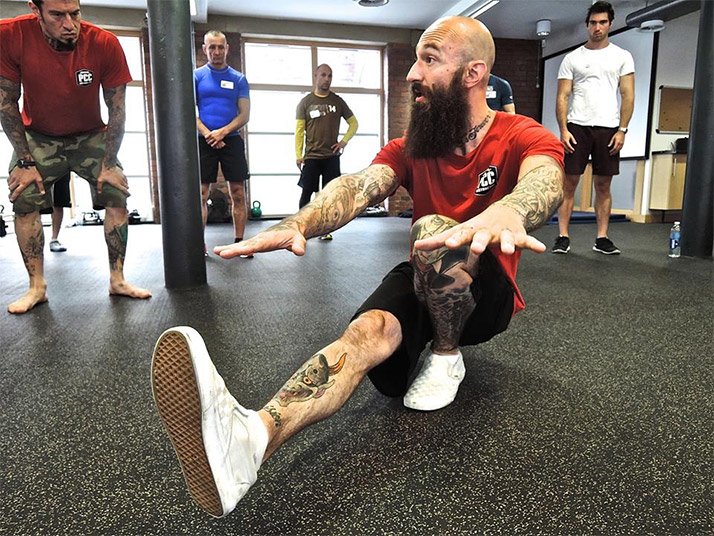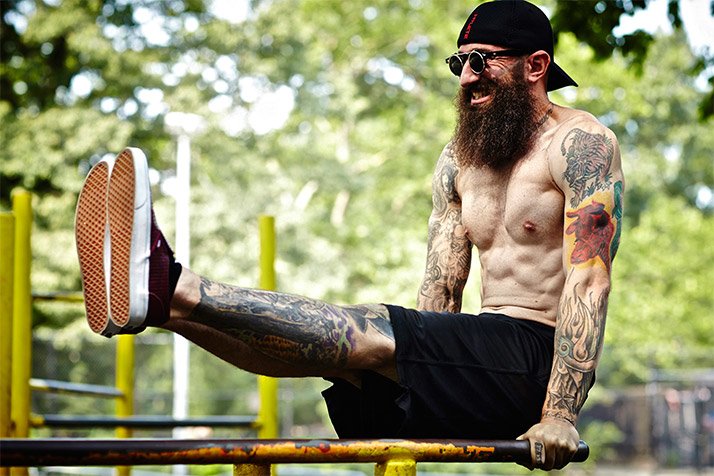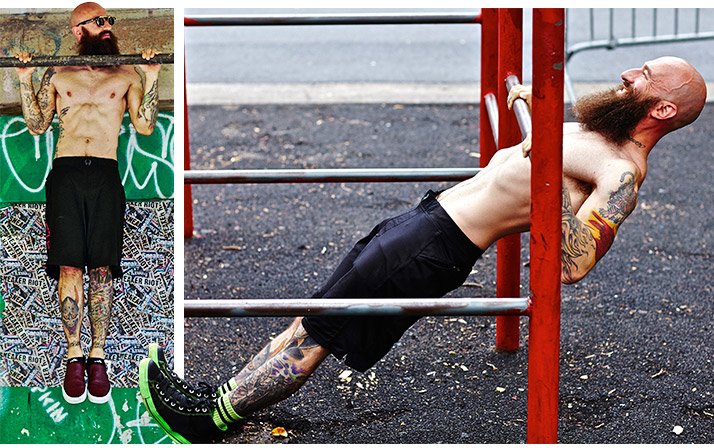
5 Bodyweight Staples Everyone Should Do
Are you guilty of overcomplicating your bodyweight training with too many goals and fancy movements? Strip away the fluff and work toward mastering these 5 tried-and-true exercises first!
Now that bodyweight strength training has gone mainstream in recent years, there are a lot of different calisthenics programs hitting the scene. So what's the best one? The one you'll do, of course!
The exact details depend a bit on your fitness level, but the great thing about calisthenics exercises is that they are easily scalable for anyone. In fact, no matter your level, you can use the template below to get a fantastic full-body workout in 30 minutes or less. But it'll also give you clear goals to work toward for months or even years on end.
5 Essential Bodyweight Exercises
Watch the video - 1:54
I've trained thousands of clients and certified hundreds of trainers in calisthenics, and along the way I've found these five exercises—and their progressive variants—are enough to keep anyone busy and help develop a well-rounded physique along the way.
Together, they'll challenge you on many fronts including balance, flexibility, strength, and body control. Aim for a solid set of 10 repetitions on each of these—or a 30-second hold for the isometric exercises—and you'll be well on your way to calisthenics domination.
Staple 1 Pistol Squat
The pistol squat, a single-legged squat variation where you hold the opposite leg in front of your body, is the gold standard of bodyweight leg exercises. Though a fairly advanced move in its strictest form, the pistol can be regressed in order to suit both beginners and intermediate-level trainees. In other words, it's a journey, but it's one you can start from wherever you are.
It's a given that you should have a solid command of basic two-legged bodyweight squats before working on the pistol, though that should not take very long for any able-bodied, reasonably fit individual who is willing to commit to doing the work.

From there, you can begin with box pistols, which consist of performing the single-legged squat with a box or bench behind you to catch your butt and provide stability in the bottom position. Start with a relatively high box, and over time, progress to using a lower box.
Eventually, you won't need to rely on the box at all, at which point you will be doing the full pistol squat. If those ever get easy, you can eventually work toward performing pistol squats with your hands held behind your back.
Staple 2 Back Bridge
The back bridge, or "wheel pose" in yoga, is a powerful inversion that provides several benefits. The full bridge is fantastic for strengthening the entire posterior chain—glutes, hamstrings, spinal erectors, and upper back—while simultaneously providing an intense stretch for the entire front of the body, including the hip flexors, abs, and chest.
If you aren't there yet, you can begin with a variation where the top of your head remains on the ground and gradually work toward increasing your range of motion over time. Once a basic bridge is no longer challenging, you can begin working on lifting an arm and/or leg off the ground. Or you can get a partner to stand on you—hey, it's still technically bodyweight training!
Staple 3 L-Sit
Just like the back bridge, a proper L-sit demonstrates an optimal balance of strength and mobility between the front and back sides of the body. For an exercise that requires no equipment at all, the L-sit can still give you a serious challenge—and a lot of bang for your proverbial buck! L-sits work your arms, chest, lats, abs, hip flexors, and quads, while providing a stretch for the hamstrings and lower back.
Start by sitting on the floor with your hands flat on the ground just outside of your hips. Next, place all of your weight on your palms and lift your legs straight out in front of you parallel to the ground, so your body resembles a capital letter L.

If you aren't strong enough to perform a full L-sit, you can begin with your knees tucked close to your chest as a regression. Elevating your hands on blocks or handles is also a helpful way for newcomers to begin working toward a full L-sit on the ground. To make the move more difficult, you can aim to get your legs above parallel, so your body forms more of a V shape; this is sometimes called a V-sit.
Staple 4 Handstand
Handstands provide an intense upper-body workout as well as a wonderful proprioceptive and balance challenge. By inverting your body, you can work your muscles from the opposite angle they're used to. Handstands are also great for overall shoulder health and mobility.
As the world of handstands can be intimidating at first, I recommend beginning with brief holds supported by a wall. Eventually, you can work toward freestanding handstands, and even single-armed variants. Read my full article on handstand training for more information.
Staple 5 Pull-up
Bar calisthenics is well on its way to becoming a full-blown sport, and it all started with the basic pull-up. So simple in theory but often surprisingly hard in practice, the pull-up is the only exercise on this list that requires any equipment at all. You will need a sturdy bar or something else you can safely hang from in order to practice pull-ups.

Grab the bar with an overhand grip, brace your trunk, and tighten your glutes and legs. Keeping your shoulders engaged to minimize any shrugging, pull yourself up until your chin clears the bar, then carefully lower yourself back to a full hang and repeat.
If you aren't ready for full pull-ups yet, you can begin with Australian pull-ups, aka bodyweight rows, as well as straight-arm and flexed-arm bar hangs. Those of you who find the standard variety of pull-up no longer offers a challenge can begin training for the one arm pull-up.
For more information, check out Al's book and DVD, "Raising The Bar."
